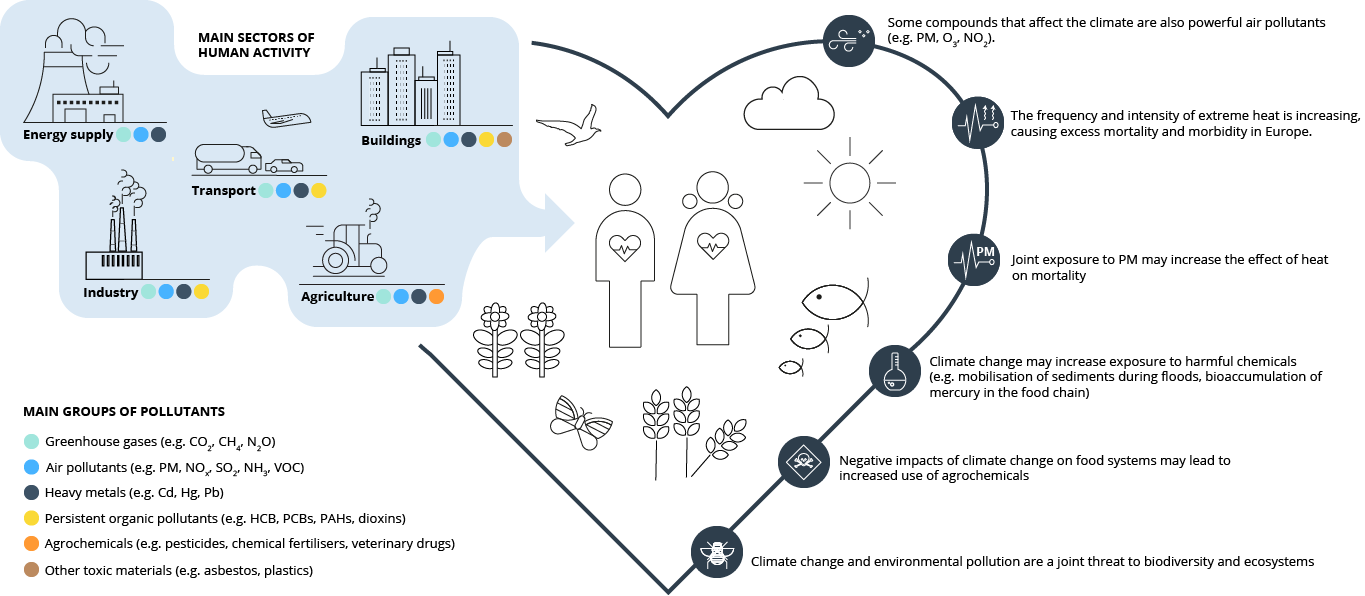Bednar-Friedl, B., et al., 2022, ‘Europe’, in: Pörtner, H. O., et al. (eds), Climate change 2022: impacts, adaptation and vulnerability.Contribution of Working Group II to the Sixth Assessment Report of the Intergovernmental Panel on Climate Change, Cambridge University Press (https://www.ipcc.ch/report/ar6/wg2/downloads/report/IPCC_AR6_WGII_Chapter13.pdf) accessed 25 October 2022.
Cabeza, L. F., et al., 2022, ‘Buildings’ in: Skea, J., et al. (eds), Climate change 2022: mitigation of climate change. Contribution of Working Group III to the Sixth Assessment Report of the Intergovernmental Panel on Climate Change, Cambridge University Press (https://report.ipcc.ch/ar6wg3/pdf/IPCC_AR6_WGIII_FinalDraft_Chapter09.pdf) accessed 25 October 2022.
Cissé, G., et al., 2022, ‘Health, well-being and the changing structure of communities’, in: Pörtner, H. O., et al. (eds), Climate change 2022:impacts, adaptation and vulnerability. Contribution of Working Group II to the Sixth Assessment Report of the Intergovernmental Panel on Climate Change, Cambridge University Press (https://www.ipcc.ch/report/ar6/wg2/downloads/report/IPCC_AR6_WGII_Chapter07.pdf) accessed 25 October 2022.
EEA, 2019a, The European environment — state and outlook 2020, Publications Office of the European Union, Luxembourg (https://www.eea.europa.eu/publications/soer-2020) accessed 25 October 2022.
EEA, 2019b, Renewable energy in Europe: key for climate objectives, but air pollution needs attention, EEA Briefing, European Environment Agency (https://www.eea.europa.eu/themes/energy/renewable-energy/renewable-energy-in-europe-key) accessed 25 October 2022.
EEA, 2020a, Drivers of change of relevance for Europe’s environment and sustainability, EEA Report No 25/2019, European Environment Agency (https://www.eea.europa.eu/publications/drivers-of-change) accessed 6 September 2022.
EEA, 2020b, State of nature in the EU: results from reporting under the nature directives 2013-2018, EEA Report No 10/2020, European Environment Agency (https://www.eea.europa.eu/publications/state-of-nature-in-the-eu-2020) accessed 6 September 2022.
EEA, 2020c, ‘Dashboard — renewable energy in Europe’, European Environment Agency (https://www.eea.europa.eu/themes/energy/renewable-energy/renewable-energy-in-europe-2020) accessed 25 October 2022.
EEA, 2021, Nature-based solutions in Europe, EEA Report No 1/2021, European Environment Agency (https://www.eea.europa.eu/publications/nature-based-solutions-in-europe) accessed 6 September 2022.
EEA, 2022a, ‘National emissions reported to the UNFCCC and to the EU Greenhouse Gas Monitoring Mechanism’, European Environment Agency (https://www.eea.europa.eu/data-and-maps/data/national-emissions-reported-to-the-unfccc-and-to-the-eu-greenhouse-gas-monitoring-mechanism-18) accessed 25 October 2022.
EEA, 2022b, Economic losses and fatalities from weather and climate-related events in Europe, EEA Briefing, European Environment Agency (https://www.eea.europa.eu/publications/economic-losses-and-fatalities-from/economic-losses-and-fatalities-from) accessed 27 October 2022.
EEA, 2022c, Climate change as a threat to health and well-being in Europe: focus on heat and infectious diseases, EEA Report No 7/2022 (https://www.eea.europa.eu/publications/climate-change-impacts-on-health) accessed 11 November 2022.
EEA, 2022d, Air quality in Europe 2022, European Environment Agency (https://www.eea.europa.eu/publications/air-quality-in-europe-2022) accessed 24 November 2022.
EEA, forthcoming, Sustainably cooling buildings in the EU: exploring the links between climate change mitigation, adaptation and social impacts.
EFSA, et al., 2020, ‘Climate change as a driver of emerging risks for food and feed safety, plant, animal health and nutritional quality’, EFSA Supporting Publications 17(6), 1881E (https://doi.org/10.2903/sp.efsa.2020.EN-1881).
ETC, 2021, Bioresources within a net-zero emissions economy: making a sustainable approach possible, Energy Transitions Commission (https://www.energy-transitions.org/wp-content/uploads/2021/07/ETC-bio-Report-v2.5-lo-res.pdf) accessed 5 October 2022.
FAO, 2020, Climate change: unpacking the burden on food safety, Food and Agriculture Organization of the United Nations (https://www.fao.org/3/ca8185en/CA8185EN.pdf) accessed 25 October 2022.
IRP, 2015, Policy coherence of the sustainable development goals: a natural resource perspective, International Resource Panel (https://www.resourcepanel.org/reports/policy-coherence-sustainable-development-goals) accessed 6 September 2022.
OECD, 2019, Global material resources outlook to 2060: economic drivers and environmental consequences, OECD Publishing (https://read.oecd-ilibrary.org/environment/global-material-resources-outlook-to-2060_9789264307452-en#page1) accessed 25 October 2022.
Paerl, H. W., et al., 2016, ‘Mitigating cyanobacteria harmful algal blooms in aquatic ecosystems impacted by climate change and anthropogenic nutrients’, Harmful Algae 54, pp. 213-222 (https://doi.org/10.1016/j.hal.2015.09.009).
Peters, A. and Schneider, A., 2021, ‘Cardiovascular risks of climate change’,Nature Reviews Cardiology 18, 1-2 (https://doi.org/10.1038/s41569-020-00473-5).
Wells, M. L., et al., 2020, ‘Future HAB science: directions and challenges in a changing climate’, Harmful Algae 91, 101632 (https://doi.org/10.1016/j.hal.2019.101632).
Willett, W., et al., 2019, ‘Food in the anthropocene: the EAT-Lancet Commission on healthy diets from sustainable food systems’, The Lancet 393(10170), pp. 447-492 (https://doi.org/10.1016/S0140-6736(18)31788-4).

Document Actions
Share with others